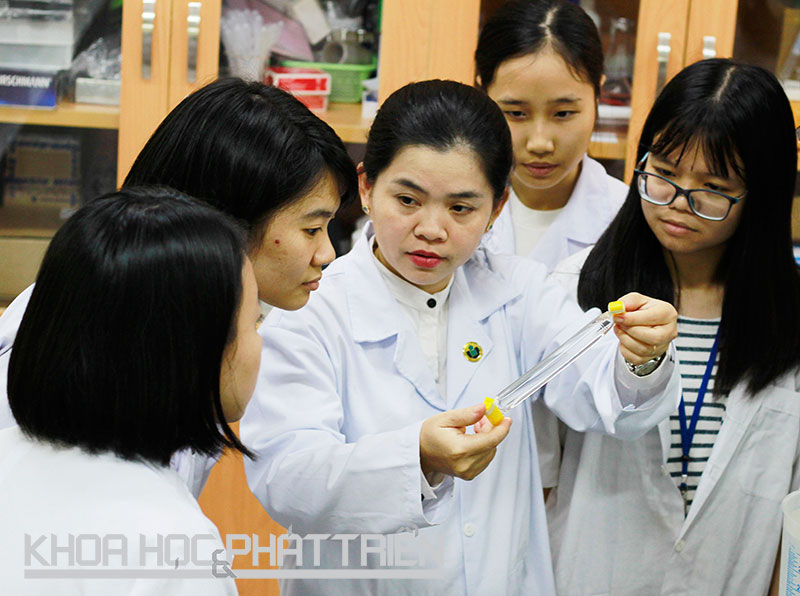
The smart bio-glue invented by scientist Nguyen Thi Hiep can be used to stop bleeding and reduce the time needed for tissue regeneration, providing a self-healing solution for those living far from hospital.
 |
| Nguyen Thi Hiep (middle) and her co-workers. |
The smart bio-glue invented by scientist Nguyen Thi Hiep can be used to stop bleeding and reduce the time needed for tissue regeneration, providing a self-healing solution for those living far from hospital.
It is formed primarily by the cross linking of hyaluronic acid (which contributes significantly to cell growth and migration) and chitosan (useful for tissue regeneration).
There also are additional ingredients such as silver and curcumin nanoparticles that can be used for specific applications.
Hiep’s research team is testing the glue to maximize the safety and effectiveness of the material, hoping to create a product that can be applied immediately to all types of wounds.
After the application, a membrane that prevents bleeding is created which absorbs fluid from wounds and prevents infection.
Hiep has been working on the product over the last 10 years. There are different types of membranes that can be used for specific purposes
In some cases, two to three membranes would be needed – one for stimulating the development of tissue and skin, and the other for preventing bacteria.
Scientists believe that the glue membrane would be particularly useful for patients in rural and remote areas. In case of accidents, those who live far from hospitals can use the glue for first aid before they go to a medical facility. The glue helps prevent bleeding.
The cost is estimated at VND50,000 for one application at home and 1 million for one use for soldiers and crew, depending on the wound.
Hiep’s research focuses on biomaterials. Besides bio-glue, she and her co-workers have created a needle-less suturing kit for wound healing.
The biological materials and intelligent medical devices created by Hiep allow people to have medical care at home. This can help ease the overloading of the medical care system in large cities.
In order to pursue research, Hiep has poured all her money from her monthly salary, and from internationally published articles and international donors.
The money from awards she has won at domestic and international events is also spent to carry out experiments and research projects.
Hiep, 37, has had 41 internationally published articles, nearly 60 scientific articles presented at international conferences, three patents, one utility solution, and many articles in domestic publications.
(Source: VNN)





